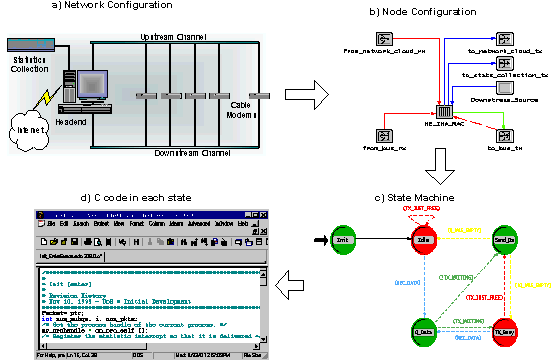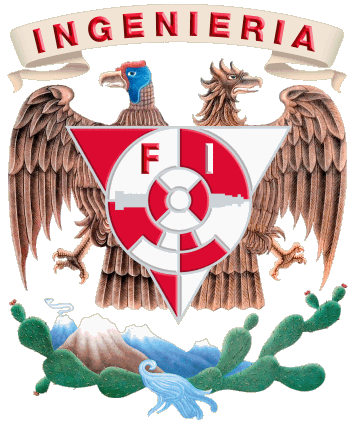Víctor Rangel Licea, Ph.D.

PROF. TITULAR C
Depto. Ing. en Telecomunicaciones
Facultad de Ingeniería, UNAM
Email: vrangelicea@gmail.com
MY Ph.D Thesis
On the scalability plans of the (digital upstream channel) DVB/DAVIC protocol specification and performance comparison: DVB/DAVIC vs DOCSIS 1.0 compliant cable modems.
DOWNLOAD MY Ph.D Thesis

Advances in remote access technologies have been lagging behind the fast placed Local and Metropolitan Area Networks. Combined with the rapid growth of high-speed Internet access, its availability and appeal to a much wider audience beyond the academic community, along with its growing commercial use, there is increased need for high speed residential access. Community Antenna Television (CATV) Networks are suitable candidates for the delivery of high-speed data multimedia services due to excess unused bandwidth. International organisations and industrial consortia have produced specifications, but the one that seems to dominate the European market turned out to be the Digital Video Broadcasting (DVB)/ Digital Audio-Video Council (DAVIC). Its rival technologies are (in Europe) Euro Data Over Cable Service Interface Specification (EuroDOCSIS), and in North America DOCSIS, which according to strong backing from major vendor is set to be a very competitive standard. In a bandwidth limited system, performance analysis under different loading scenarios and scalability of the network when different applications are used is essential for capacity planning and for identifying inefficiencies for future extensions.
In this context, the first part of this research targets the implementation of a simulation model, which will allow us to get a detailed performance characterization of the DVB/DAVIC protocol specification. At the current time, this simulation model is being implemented using the OPNET Simulation Packge v 6.0. The DVB/DAVIC model is based on a hierarchical design as shown in Figure 1a. At the top level the network topology, the network components, (i.e. the Interactive Network Adaptor and Network Interface Units), and their connectivity is defined (Figure a). The next level (Figure b) defines the functionality of a node in terms of components such as traffic sources, Medium Access Control (MAC), their interfaces, etc. The operation of each component is defined by a state machine (Figure c). The actions of the component when it is at a particular state is finally defined in C code (Figure d). This approach allows modifications to be applied to the operation of the modelled protocol and different optimisations to be tested. The detail of the new OPNET model is extensive and it accurately models the interaction of the INA(Head-End) with the NIUs (Euro Modems) using the appropriate packet formatting without abstracting the protocol operation specifics. The drawbacks of the detailed model are increased complexity and high computational requirements. In contrast, using accurate models allows simulations of systems that are very good approximations of real systems with minimal assumptions and abstractions.
A novel scheduling algorithm is being implemented and will support the three access methods of the DVB/DAVIC protocol: Contention (which lets users send information at any time with the risk to have a collision with other user's transmissions); Reservation (the user sends control information announcing his demand for transmission capacity. He gets grants for the use of slots); and Fixed Rate (where the user has a reservation of one or several timeslots in each frame enabling, e.g. for voice, audio) With the Fixed Rate access method implemented the DVB/DAVIC model will be able to support ATM Quality of Service (QoS), such as Constant Bit Rate (CBR) and Available Bit Rate (ABR).
The second part of this research addresses a performance analysis of the DVB/DAVIC protocol, in terms of Mean Access Delay/System Throughput/ Utilization Vs Offered Load/Number of Cable Modems, for different packet sizes (40, 64, 128, 256, 512 and 1024 bytes) and isochronous streams (8, 16, 32, 64 and 128 Kbps). The performance analysis will focus on: I) The effects of the packet size in terms of mean delay and system throughput. These tests evaluate the benefits of relaxing the response time requirements, by increasing the packet size, for the benefit of increased system throughput and number of supported streams; and II) The capacity of the upstream channel for different streams. Small packet sizes benefit the response time of interactive applications. On the other hand, small packets, put higher stress on the network.This is because more requests per volume of data have to be issued, which increases the protocol overhead and the probability of collisions. These tests will examine the channel capacity under the worst case scenario for the streams considered.
The last part, addresses a detailed performance comparison between the DVB/DAVIC vs DOCSIS, via simulation results and benchmarking results. In terms of benchmarking (testbed) results, we will address to the performance of data, video and multimedia applications over CATV networks, along with quality of digital data/audio/video that can be delivered using the present technology and the end-to-end delay/throughput characteristics of Internet access and client/server applications.
Research is carried out with the support of the National Autonomous University of Mexico (UNAM).
Victor Rangel Web Page, Last Update SEPTEMBER 2014

